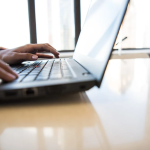When the solar eclipse happens on April 8 in North America, you might want to use your phone to take pictures of it. But is it safe to do so? And if it is, how should you do it safely?
Some groups say it’s not a good idea to use your phone during the eclipse. Prevent Blindness, an organization that works to prevent eye problems, warns that trying to take photos with your phone could accidentally make you look at the sun, which could hurt your eyes. They also say it might damage your phone’s camera.
This warning is mainly for the partial phases of the eclipse, which people outside the path of totality will see. Plus, if you take a photo of a partial eclipse with your phone, it won’t look good. That’s because even a small part of the sun that’s still visible can be too bright for your phone’s camera and make your picture too bright.
To take a picture of the partial solar eclipse, you need to use special filters like the ones in solar eclipse glasses. Dr. Ralph Chou, a professor who studies vision at the University of Waterloo, suggests cutting your glasses in half and taping one piece over your phone’s camera lens. You can also buy ready-made filters for smartphones, such as the VisiSolar Smartphone Photo Filter and the Solar Snap Eclipse App Kit. These filters come with apps that help you take good pictures of the partially eclipsed sun. Another option is to use a clip-on zoom lens for smartphones, which you can easily find online.
If you’re in the path of totality, you’ll also see the partial phases of the eclipse. But during the 2.5-hour event, the moon will completely cover the sun for a short time. This is called totality. During totality, you can take off your solar eclipse glasses and remove the filters from your phone. It’s the only time you can safely look directly at the sun without eye protection.
The best way to take a photo is to turn off your flash, use the ultrawide setting, focus on the middle distance, and frame the totally eclipsed sun in your shot, as suggested by Space.com. For videos, set up your phone on a tripod a few minutes before totality, use the ultrawide mode, frame your shot, and start recording. This way, you’ll capture images of yourself experiencing totality and record your reactions.
Remember: It’s only safe to look at the eclipse without solar eclipse glasses during the short period of totality. Even when taking photos with your phone, Dr. Chou recommends keeping your solar eclipse glasses on throughout the eclipse, unless you’re in the path of totality.













